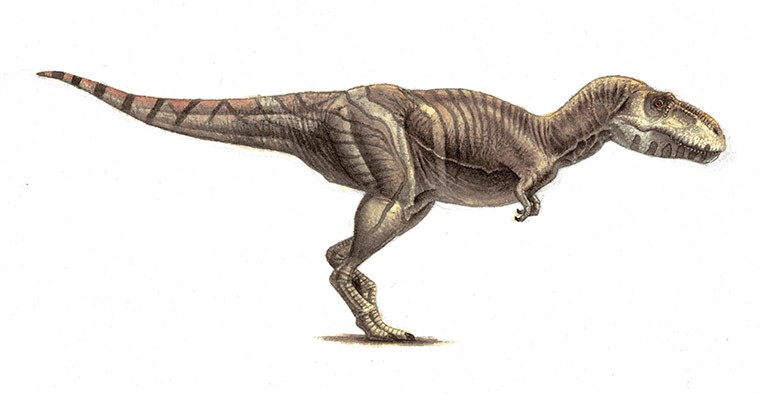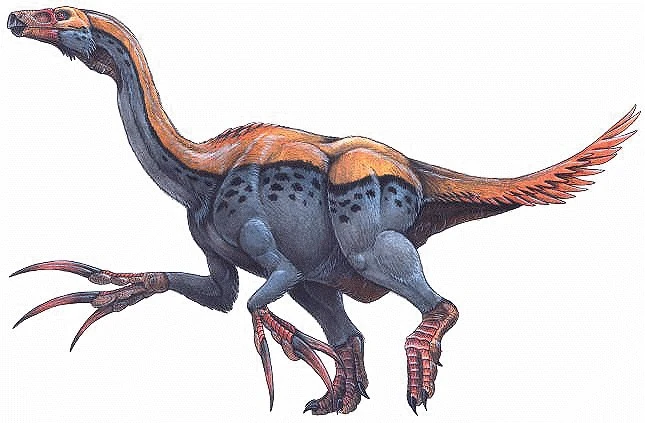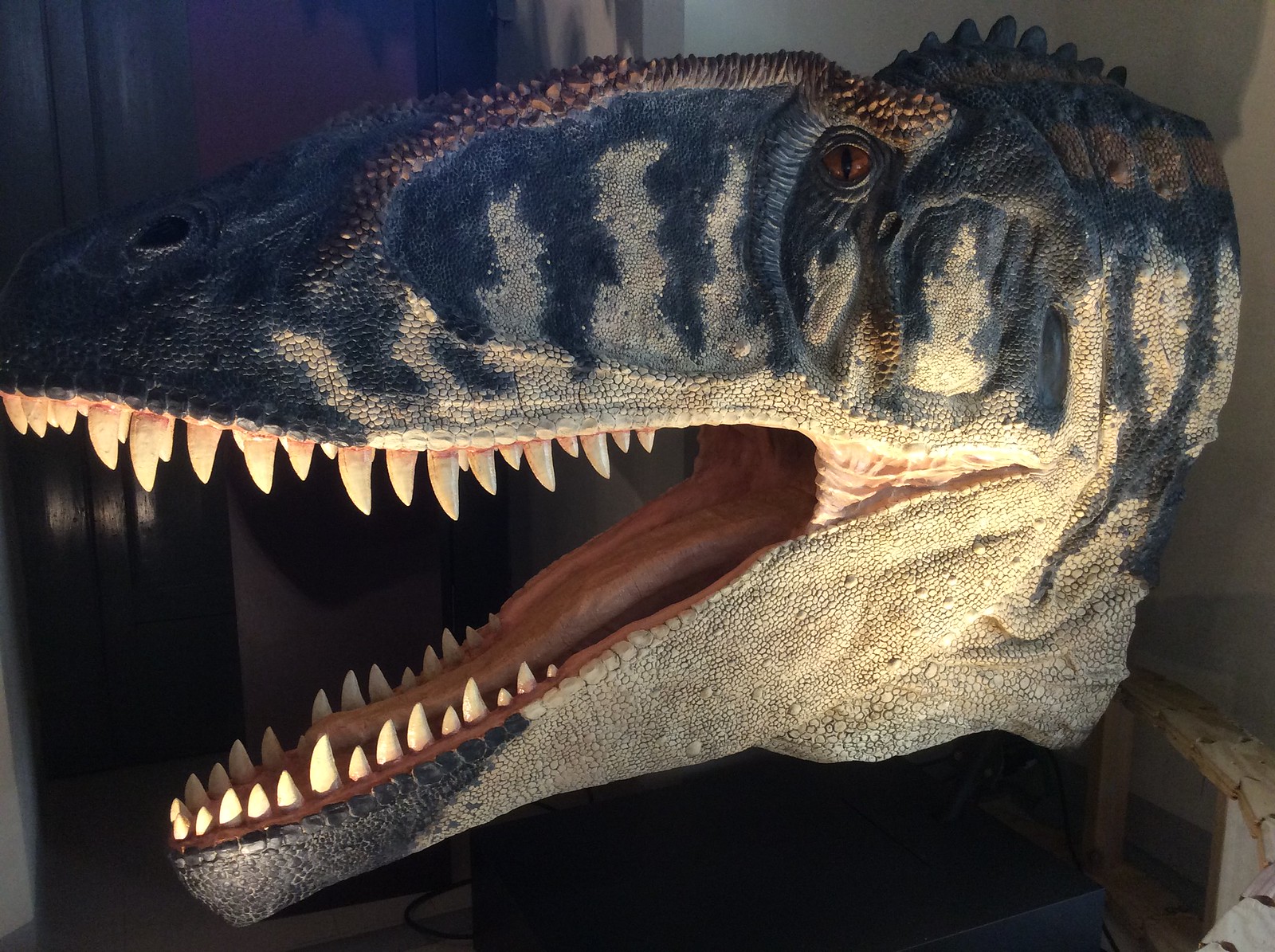Post by Carcharodon on Dec 28, 2013 22:13:26 GMT 5
Tarbosaurus bataar
Tarbosaurus belongs in the subfamily Tyrannosaurinae within the family Tyrannosauridae, along with the earlier Daspletosaurus, the more recent Tyrannosaurus and possibly Alioramus. Animals in this subfamily are more closely related to Tyrannosaurus than to Albertosaurus and are known for their robust build with proportionally larger skulls and longer femurs than in the other subfamily, the Albertosaurinae. Although many specimens of this genus have been found, little definite data was confirmed on the dinosaur as of 1986, though it was presumed to share many characteristics with other tyrannosaurids. The close similarities have prompted some scientists to suggest a possible link between the North American and Eurasian continents at that time, perhaps in the form of a land bridge. As with most dinosaurs, Tarbosaurus size estimates have varied through recent years. It could have been 10 to 12 meters long, with a weight of 5 - 7 tons.

Therizinosaurus cheloniformis
Therizinosaurus (play /???r?z?n??s?r?s/; 'scythe lizard', from the Greek therizo meaning 'to reap' or 'to cut off' and sauros meaning 'lizard') is a genus of very large theropod dinosaur. Therizinosaurus lived in the late Cretaceous Period (late Campanian-early Maastrichtian stages, around 70 million years ago), and was one of the last and largest representatives of its unique group, the Therizinosauria. Its fossils were first discovered in Mongolia and they were originally thought to belong to a turtle-like reptile (hence the species name, T. cheloniformis — "turtle-formed"). It is known only from a few bones, including gigantic hand claws, from which it gets its name. Though the fossil remains of Therizinosaurus are incomplete, inferences can be made about its physical characteristics based on related therizinosaurids. Like other members of its family, Therizinosaurus probably had a small skull atop a long neck, and had a bipedal gait and a heavy, deep, broad body (as evidenced by the wide pelvis of other therizinosaurids). Its forelimbs may have reached a length of 2.5 metres (8 feet) or even 3.5 metres for the largest known specimen. Its hindlimbs ended in four weight-bearing toes, unlike other theropod groups, in which the first toe was reduced to a dewclaw. Gregory S. Paul in 2010 estimated the length of Therizinosaurus at ten metres, the weight at five tonnes (5.5 tons). It is the largest therizinosaur known and the largest known member of the Maniraptora. The most distinctive feature of Therizinosaurus was the presence of three gigantic claws on each digit of its frontlimbs. These were common among therizinosaurs but especially large in Therizinosaurus, and while the largest claw specimens are incomplete, they probably reached just under 1 metre (3.28 ft) in length. The claws are the longest known from any animal. The claws were relatively straight, only gradually tapering into a point, and extremely narrow, transversely flattened.

Tarbosaurus belongs in the subfamily Tyrannosaurinae within the family Tyrannosauridae, along with the earlier Daspletosaurus, the more recent Tyrannosaurus and possibly Alioramus. Animals in this subfamily are more closely related to Tyrannosaurus than to Albertosaurus and are known for their robust build with proportionally larger skulls and longer femurs than in the other subfamily, the Albertosaurinae. Although many specimens of this genus have been found, little definite data was confirmed on the dinosaur as of 1986, though it was presumed to share many characteristics with other tyrannosaurids. The close similarities have prompted some scientists to suggest a possible link between the North American and Eurasian continents at that time, perhaps in the form of a land bridge. As with most dinosaurs, Tarbosaurus size estimates have varied through recent years. It could have been 10 to 12 meters long, with a weight of 5 - 7 tons.

Therizinosaurus cheloniformis
Therizinosaurus (play /???r?z?n??s?r?s/; 'scythe lizard', from the Greek therizo meaning 'to reap' or 'to cut off' and sauros meaning 'lizard') is a genus of very large theropod dinosaur. Therizinosaurus lived in the late Cretaceous Period (late Campanian-early Maastrichtian stages, around 70 million years ago), and was one of the last and largest representatives of its unique group, the Therizinosauria. Its fossils were first discovered in Mongolia and they were originally thought to belong to a turtle-like reptile (hence the species name, T. cheloniformis — "turtle-formed"). It is known only from a few bones, including gigantic hand claws, from which it gets its name. Though the fossil remains of Therizinosaurus are incomplete, inferences can be made about its physical characteristics based on related therizinosaurids. Like other members of its family, Therizinosaurus probably had a small skull atop a long neck, and had a bipedal gait and a heavy, deep, broad body (as evidenced by the wide pelvis of other therizinosaurids). Its forelimbs may have reached a length of 2.5 metres (8 feet) or even 3.5 metres for the largest known specimen. Its hindlimbs ended in four weight-bearing toes, unlike other theropod groups, in which the first toe was reduced to a dewclaw. Gregory S. Paul in 2010 estimated the length of Therizinosaurus at ten metres, the weight at five tonnes (5.5 tons). It is the largest therizinosaur known and the largest known member of the Maniraptora. The most distinctive feature of Therizinosaurus was the presence of three gigantic claws on each digit of its frontlimbs. These were common among therizinosaurs but especially large in Therizinosaurus, and while the largest claw specimens are incomplete, they probably reached just under 1 metre (3.28 ft) in length. The claws are the longest known from any animal. The claws were relatively straight, only gradually tapering into a point, and extremely narrow, transversely flattened.













